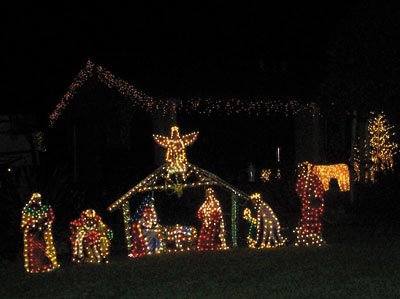Many years ago I taught an English course at Gilroy High School
entitled
”
The Bible as Literature.
”
Many years ago I taught an English course at Gilroy High School entitled “The Bible as Literature.” It was a fine course, helping students learn about stories and characters from the Bible that have become the basis for many European, British and American works of literature, music and visual art. Critic Northrup Fry once noted that the Bible was “the most important influence in the imaginative tradition of Western Literature” and it’s always disappointing to discover how many students don’t have a clue to the meaning of such phrases as “the patience of Job,” “the writing on the wall” or “a doubting Thomas.” Often such allusions are lost on them, as the Bible seems to be rarely taught in school or read in the home these days.
Unfortunately, the class eventually fell victim to a frenzy of curriculum reform, but I’m reminded of it now as I sit down to write this column.
One concept our textbook discussed was “myth.” It used this term in a special sense, to refer to stories that had importance quite apart from whether their events actually took place at some particular place and time. Myths are stories, often symbolic in nature, that reflect a glimpse of reality beyond historical accuracy.
Most of us are all familiar with the New Testament account of the first Christmas. But this great Christmas “myth” goes beyond the literal details right into the core of our human experience to point out timeless truths.
One of my favorite examples of the power inherent in the Christmas story comes from the late Leo Buscaglia, professor, author and television personality. Years ago he spent a Christmas in Indonesia, an experience which gave him a whole new perspective on this holiday.
When he arrived at a village in Bali, he discovered the residents were Muslims who had never heard the nativity narrative, so at their request he retold the story from St. Luke’s Gospel.
He summarized how Joseph, a poor carpenter, and his pregnant wife, Mary, journeyed from Nazareth to Bethlehem to be counted in a census ordered by the Roman Emperor. Arriving in Bethlehem, they found all the inns full and had to spend the night in a stable. In those humble circumstances was born the one Christians consider the Son of God.
When he finished the story, one of the listeners asked why Mary and Joseph were not allowed into an inn. Buscaglia replied that all the rooms were full.
“But that’s impossible,” said the villager. “There’s always more room. We would never let anyone stay in a stable.”
Becoming defensive, Buscaglia explained, “They didn’t know that Mary was to give birth to a savior.”
“What has that got to do with it? They were alone and in need. There’s always room for one more!”
Of course there are many themes inherent in the ancient nativity story. And it is the power of “myth” that enables modern readers (Christian and non-Christian) to recognize and apply these great truths to their own lives.
—
There is currently a bill before Congress to update antislavery laws in the United States. It may be hard to believe, but an estimated 27 million people are forced to work in factories, armies and farms around the world against their will.
The proposed legislation is called the William Wilberforce Act, named for a member of the British Parliament who led a 20-year campaign to abolish the slave trade in the British Empire. The Rev. John Newton, an Anglican priest who had spent an earlier career as captain of a slave trade ship (and author of the hymn “Amazing Grace” which recounted his conversion), was instrumental in convincing Wilberforce to devote his time in Parliament to working for social reform, especially ending slavery.
Many celebrations have been held this year marking the bicentennial of Wilberforce’s success. For those who would like to know more about this inspiring tale, “Amazing Grace,” a movie telling his story, has just recently been released on DVD and is available for rent or purchase.












